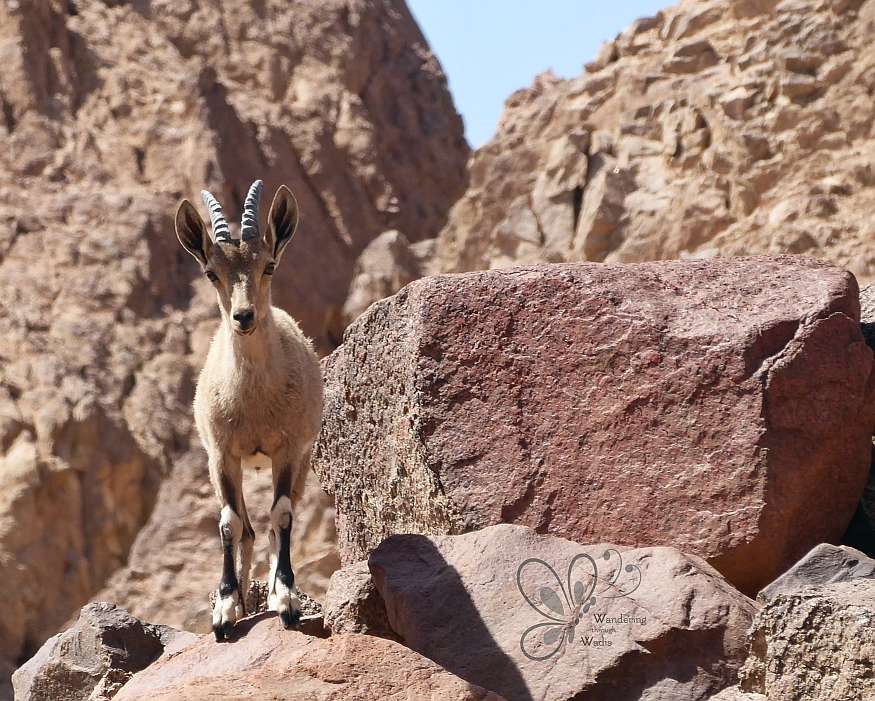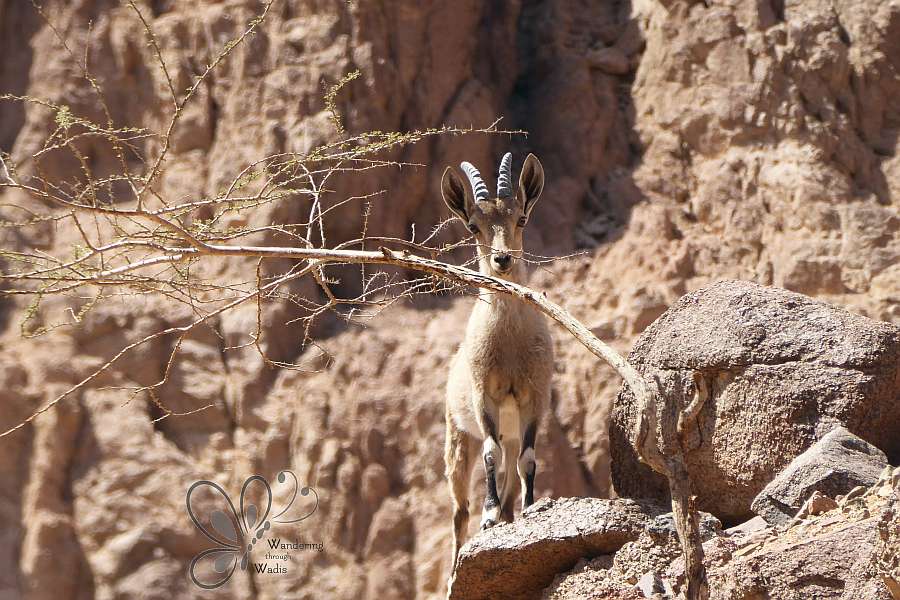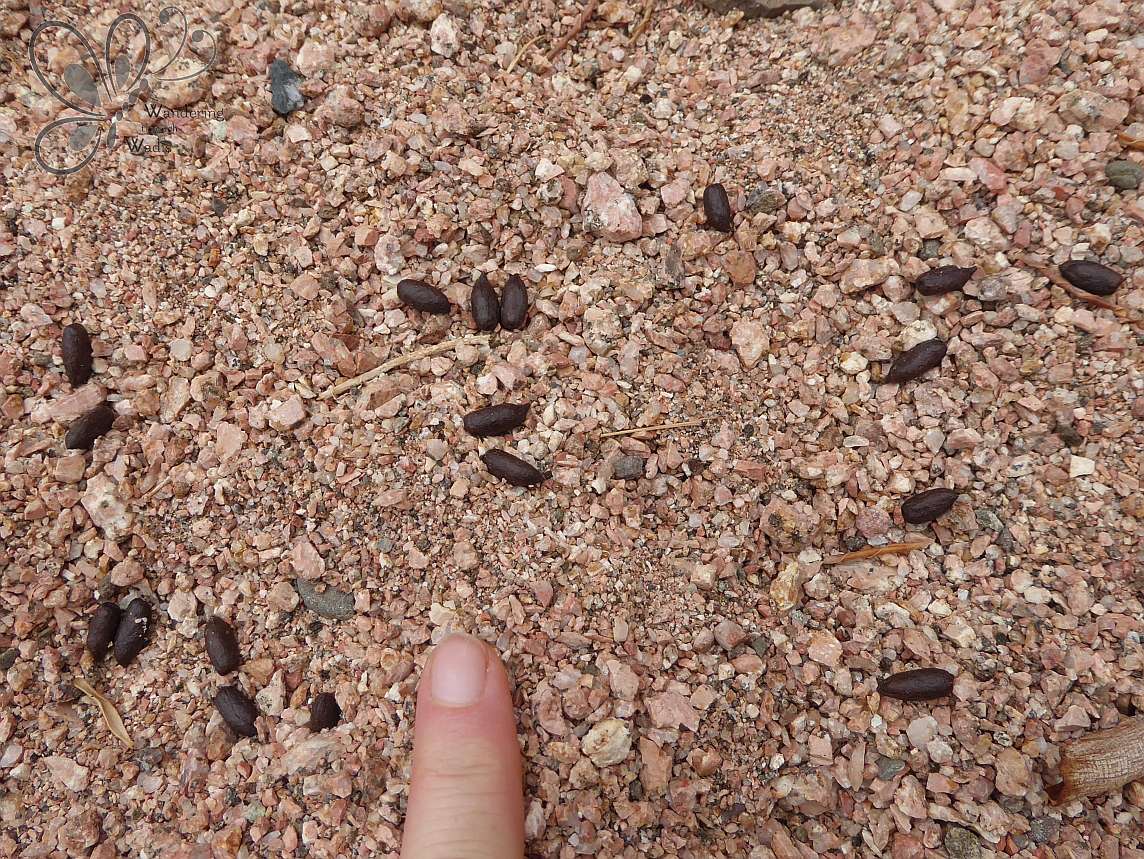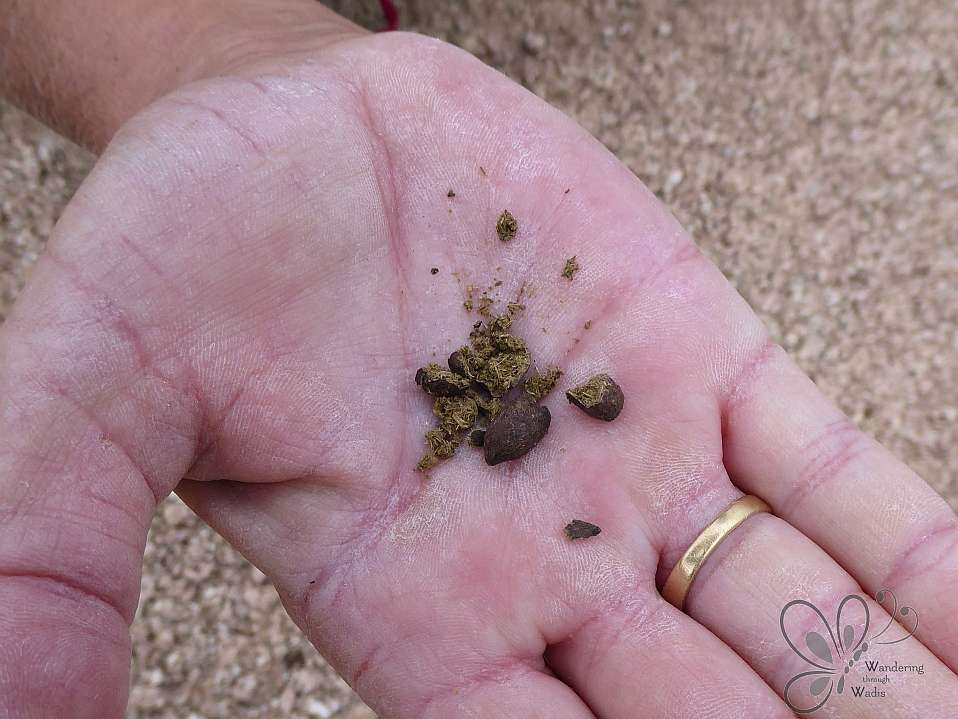Last spring, while wandering through wadis, I was lucky enough to spot a Nubian Ibex. Many years ago while driving, I saw a small herd of ibex in the distance. We stopped the car to watch them, but they were too far away to truly appreciate. Not this time!

Nubian Ibex are strong and stout goat-like mammals, adept and agile at climbing through the rocky mountainous terrain they typically call home.

Both male and female Nubian Ibex have backswept, ridged horns that are “flattened like sword blades”, but they are longer and heavier in males. Their coat is a light sandy brown on their upper parts with a white belly and legs. Males, and some old females, have black beards. Nubian Ibex have a distinctive pattern on their legs, with black patches above and below the knee and a white patch above their hooves.

These animals are active in the early morning and late afternoon. Ibex are herbivores, eating grass, shrubs, roots, and Acacia, and they need access to standing water.

While I have not come across another more ibex, I have seen their scat in various places that I have wandered. The scat is pellet-shaped and consists only of vegetation (not fur or feathers as in carnivores).


Encounters with ibex in South Sinai are rare as the number of these beautiful mammals has been greatly declining over the years, due in part to illegal hunting (which is why I won’t say where exactly I was wandering when I spotted this one). They are listed as a “vulnerable” species on the IUCN Red List. Their survival is also threatened by competition with local livestock and feral camels, habitat loss and degradation, and the fluctuating availability and distribution of waterholes.
My encounter with a Nubian Ibex was indeed special and not one I shall ever forget!
References:
Hoath, Richard. (2003). A Field Guide to the Mammals of Egypt. Cairo: The American University in Cairo Press.
